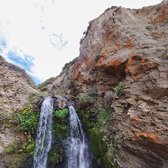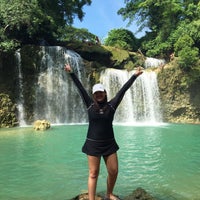

The adjacent lagoon provides ample food for their young. In spring, over 100 pairs of great egrets and great blue herons nest in the tops of the ranch’s redwoods. Seasonal avian highlights include ducks in the winter, herons in the springtime, and pelicans in the summer. Snowy egrets, blackbirds, warblers, and dozens of other bird and animal species live in and around the lagoon. The invertebrates’ presence is one reason why estuaries are one of the most productive types of ecosystems on the planet. Tiny, spineless shrimps, worms, and other creatures regulate their internal salt levels to accommodate constant changes in salinity. These hardy organisms thrive in Bolinas Lagoon’s ooze, awash with freshwater runoff and saltwater.

The best seal watching months are April through June. Though Bolinas Lagoon is not a major breeding area, 150 or more seals and their pups can often be seen on the lagoon’s haul out spots, such as Pickleweed Island. They also haul out to give birth and rear their young during the pupping season. Harbor seals have a physiological need to come onshore (haul out) almost daily to rest. This hike is sure to be one you won’t forget.As you drive Highway 1 along Bolinas Lagoon, look for harbor seals hauled out on Pickleweed and Kent islands, and on the lagoon’s tidal sandbars. Be sure to plan ahead and prepare properly. Even in nice weather, you may encounter mud, loose surfaces, and pools of water on the trail. On a warm, dry day with favorable tides, the hike is usually no problem, but if the weather turns quickly or if the tide is too high, it quickly becomes more serious. The difficulty largely depends on conditions. You’ll need to negotiate all the same terrain on the way back, and it won’t get any easier. Keep in mind that the waterfall is only the halfway point, however. The spectacle of Alamere Falls, and the nice beach surrounding it, are more than worth the trials to reach it. Only do it if you are comfortable with steep and loose rock scrambling, or if you get cut off by the tide at the falls and have no other choice. Begin at the roadside parking area along Fairfax-Bolinas Road. It’s an unofficial trail that cuts through highly eroded cliffs, and people often get injured attempting it. In fact I call this hike one of my mind sweeper treks, for I always return home calm and serene. There’s a shortcut trail shortly after passing Pelican Lake, but it has its own risks. If the tides will not cooperate, there is another option. You need to check the tides beforehand and be sure you can go one mile along the beach to Alamere Falls, and back, before high tide. This part of the hike is only safe during low tide, however, because high tide can reach the base of the bluffs and completely inundate the beach. From there begins the beautiful beachwalk between cliffs and surf to reach the falls.


Campsites can be reserved with a backcountry permit, so you can make this an overnight trip if you wish. You’ll also find a toilet and drinking water. There are thick groves, carpets of ferns, open meadows, trickling creeks, and wide vistas to keep your eyes interested the whole way.Īt Wildcat Camp is where you’ll meet the beach. From there, the trail continues to meander along hillsides and through valleys. Next comes Pelican Lake where, from the right vantage point on a clear day, you can actually see the blue ocean horizon beyond green hills hemming the lake, all in one view. The trail then turns inland and enters a forested valley, passing a few small ponds before arriving at Bass Lake, which is the first of a few freshwater lakes you’ll find perched in these hills. Take Palomarin Trail to Coast Trail, winding through lush coastal heather, wildflowers, and occasionally dense groves of pine-all atop tall bluffs that tumble to the ocean below. From there begins the dramatic hike to Alamere Falls. The trailhead has toilets, but no water or other services. The last mile is bumpy dirt, but is passable for most cars in dry weather. Most of the road to get to Palomarin is paved. Multiple trails in Point Reyes National Seashore lead to the falls, but the easiest and most scenic is from Palomarin Trailhead, which is the hike described here. If you can, visit on a weekday or get a very early start. Alamere is remote and there’s no easy way to get there, yet it remains popular because of it’s fame and relative proximity to Bay Area cities.


 0 kommentar(er)
0 kommentar(er)
